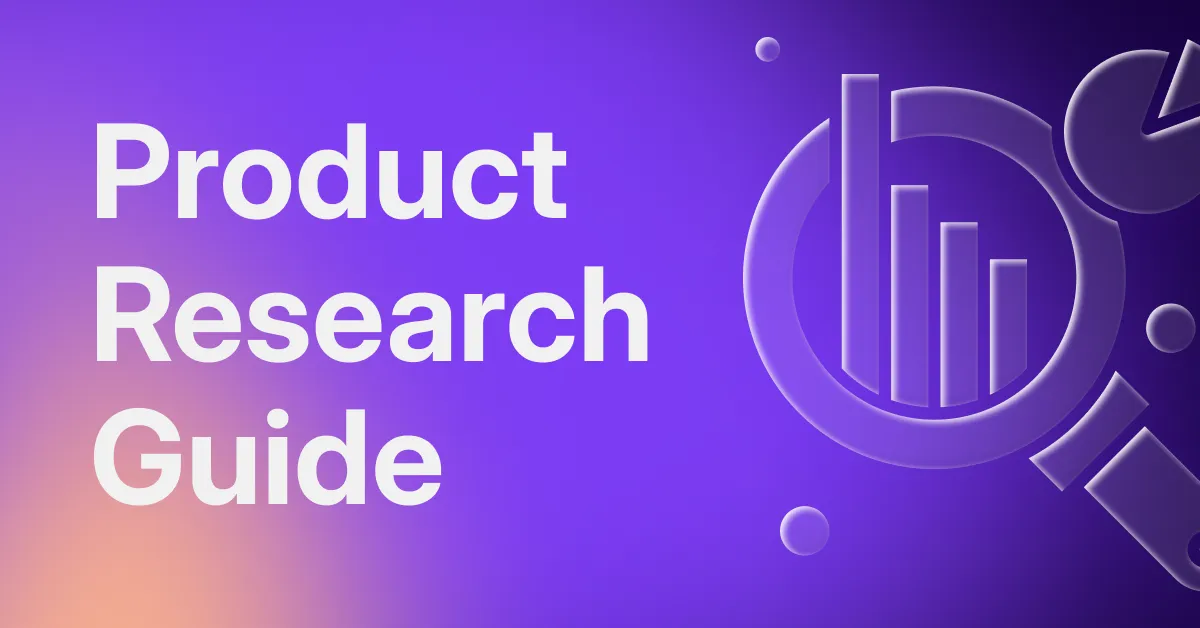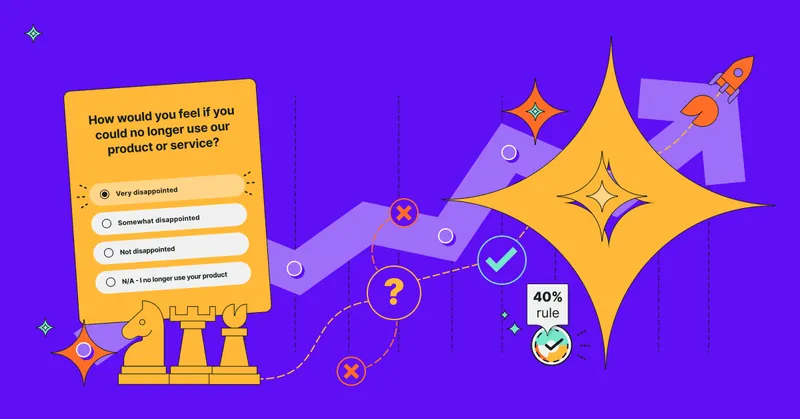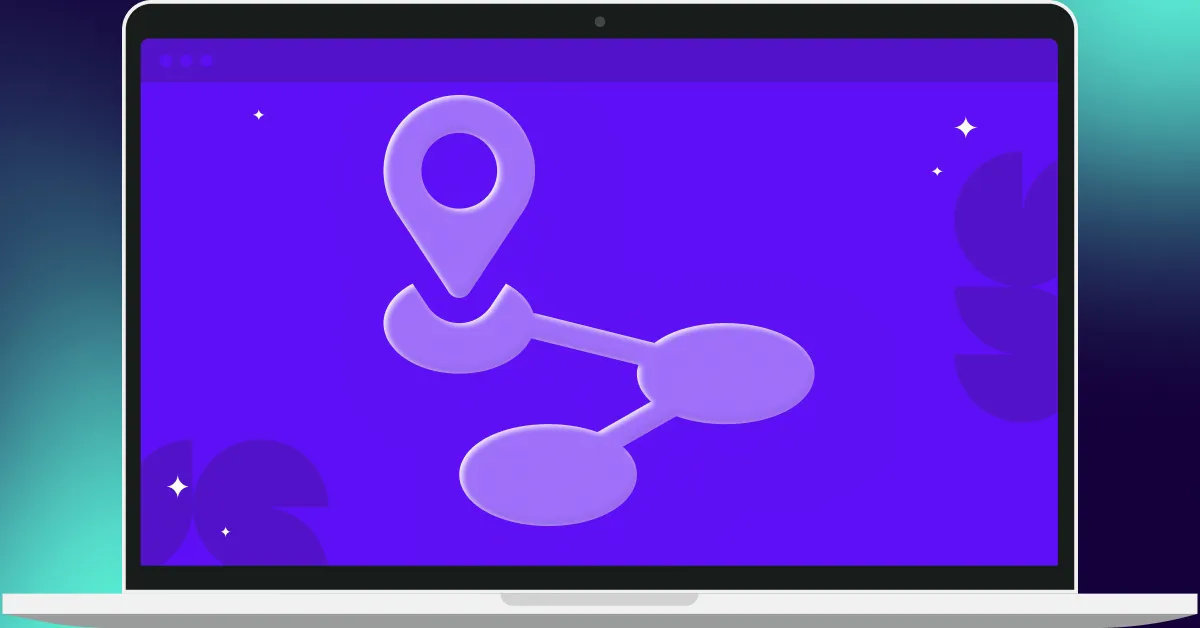The more you understand about our customers and the market at large, the better you can tailor our products, services, and strategies to meet their needs and expectations.
Two critical tools in this quest for insights are market research and user research. While they might seem similar at first glance, each serves a distinct purpose and offers unique insights that can significantly impact a business's trajectory.
So, what exactly makes them different? How do they each contribute to a successful business strategy? Read on to learn their unique benefits and the ways you can effectively utilize them in tandem to maximize business success.

What is market research?
Market research, as the term implies, involves researching the market you want to target with your product or service.
It involves gathering information about the current state of the market, your competitors, and customers' trends, with the fundamental purpose of making educated decisions about the viability of your products and services for the intended market.
Some of the most common methods used in market research include surveys, focus groups, interviews, and observation.
Surveys, such as the template below, are effective for collecting large amounts of data from a wide demographic.
On the other hand, focus groups and interviews provide more in-depth qualitative insights, but usually from a smaller group of people.
You should conduct market research whenever you need to make strategic decisions related to your products or services. This can range from entering a new market, launching a new product, rebranding, or assessing the impact of marketing campaigns.
What is user research?
User research, in contrast, is a more focused type of research that delves deep into understanding the behaviors, needs, and motivations of your users.
The aim here is to gain insights into the end-user's mindset, which can help you improve your product's user experience and usability.
Some of the most commonly used user research methods include surveys, usability testing, user interviews, and contextual inquiries.
User research is an important step at any point throughout the product development cycle, from conceptualization and prototyping to continuous product improvements.
Below is a Usability Metric for User Experience (UMUX) survey template, one of the many standardized surveys you can use as part of your user research:
Market research vs user research: the key differences
While both market research and user research play integral roles in the strategic decision-making process, they serve distinct purposes and have unique methodologies.
Objectives
The primary goal of market research is to gather information about the market landscape, including competitors, customer demographics, and market trends. This information can guide your businesses in making strategic decisions.
On the other hand, user research focuses on understanding the end users of a product or service. It seeks to delve into users' behaviors, needs, and motivations to ensure a product or service meets its intended audience's expectations and improves the overall user experience.
Scope
Market research typically has a larger scope as it aims to gather data about the entire market. This research often involves large sample sizes to provide a broader view of market dynamics.
Although it can involve a substantial number of participants, user research often delves into qualitative data, meaning its scope can be narrower and more depth-focused. It explores the interactions of a smaller, more specific group of users with a product or service, allowing for a deeper understanding of user behavior.
Researchers
Market research is usually conducted by marketing or business development teams looking to understand the dynamics of a given market. User research, in contrast, is often carried out by design and product development teams aiming to enhance the product's usability and user experience.

The benefits of market research
Here are some of the primary advantages of utilizing market research in business operations.
Discover customer preferences
The ability to understand customer preferences and behaviors with market research will give you a significant competitive edge. You’ll discover insights into what your customers want, their purchasing habits, and their perception of your brand so that you can tailor your products, services, and marketing efforts to match customer expectations.
Unveil market trends
Market trends change rapidly. Staying up-to-date with these shifts is critical to ensure your business remains relevant. Market research can help you identify emerging trends, technological advancements, and changes in consumer behavior so that you can ensure your products and services continue to meet market demand.
Identify business opportunities
By understanding the market landscape, including unmet customer needs and gaps in the market, you can identify potential areas for growth or expansion. This could mean diversifying your product line, entering a new market, or offering new services to fulfill unmet customer needs.
The B2B market research survey below can help you uncover your customers’ unmet essential needs and get ahead of the competition:
Reduce business risks
Investing in a new business venture or launching a new product always involves a certain level of risk. Market research can significantly mitigate these risks by providing valuable data about the market conditions and potential challenges.
Conduct competitive analysis
With market research, you’ll gain insights into your competitors’ strategies, strengths, and weaknesses. You can analyze their pricing, marketing strategies, customer base, and product offerings. This understanding can help you differentiate your products and services, develop effective marketing strategies, and ultimately gain a competitive edge.
The benefits of user research
User research is not just about improving your product; it also helps create a user-centered strategy that can have profound effects on your entire business.
Boost user experience
The key objective of user research is to optimize user experience. By studying user behaviors, needs, and motivations, you can design products and services that align with user expectations, leading to increased user satisfaction and improved product engagement.
Use the survey template below to measure user satisfaction with the key aspects of your product:
Guide product development
Without understanding what your users truly need, product development can be a shot in the dark. User research illuminates the path, offering insights that can inform every stage of product development. It ensures that the product design is intuitive, features are relevant, and that overall, the product addresses user needs effectively.
Facilitate user-centric decision making
User research shifts the business decision-making process from being assumption-based to being user-centered. This user-centric approach ensures that your business decisions, from marketing strategies to product features, are aligned with what your users want and need.
Use the survey template below to conduct a quick UX audit and collect insights on user needs:
Uncover user pain points
User research is like a magnifying glass that allows your business to identify and understand user pain points. These could be areas in your product or service where users struggle or face difficulties. Identifying these pain points is the first step towards improving your product or service and enhancing user satisfaction.
Increase ROI
While user research requires an investment of time and resources, the return on investment can be substantial in the form of reduced costs associated with product revisions, increased user engagement, and improved customer retention rates.
Integrating market research and user research
Although it might not always be possible to conduct both types of research, the combination can help you stay relevant and responsive to changing market conditions and user expectations.
While market research will inform your high-level strategic decisions, such as entering a new market or developing a new product line, user research can provide insights into the tactical aspects, such as product design and user experience.
Market trends and user needs change over time, so make both types of research an ongoing, iterative process to get a macro perspective of the market dynamics and a micro perspective of individual user interactions.

Supercharge your research with customized surveys
Despite their distinct objectives and methodologies, both market research and user research play pivotal roles in the success of your product or service.
Interestingly, there is a common thread between these two types of research - surveys. As a versatile tool, surveys can be used to gather data on customer preferences, buying habits, and overall market trends, providing a snapshot of the market at large as well as individual end user needs.
With Survicate, you get access to 300+ survey templates you can use right away to take your research to the next level. However, if you’d like to create one from scratch, you can do so in just a few clicks. Simply sign up, integrate with your favorite third-party tool, and start collecting invaluable user and customer data today.















.svg)

.svg)



